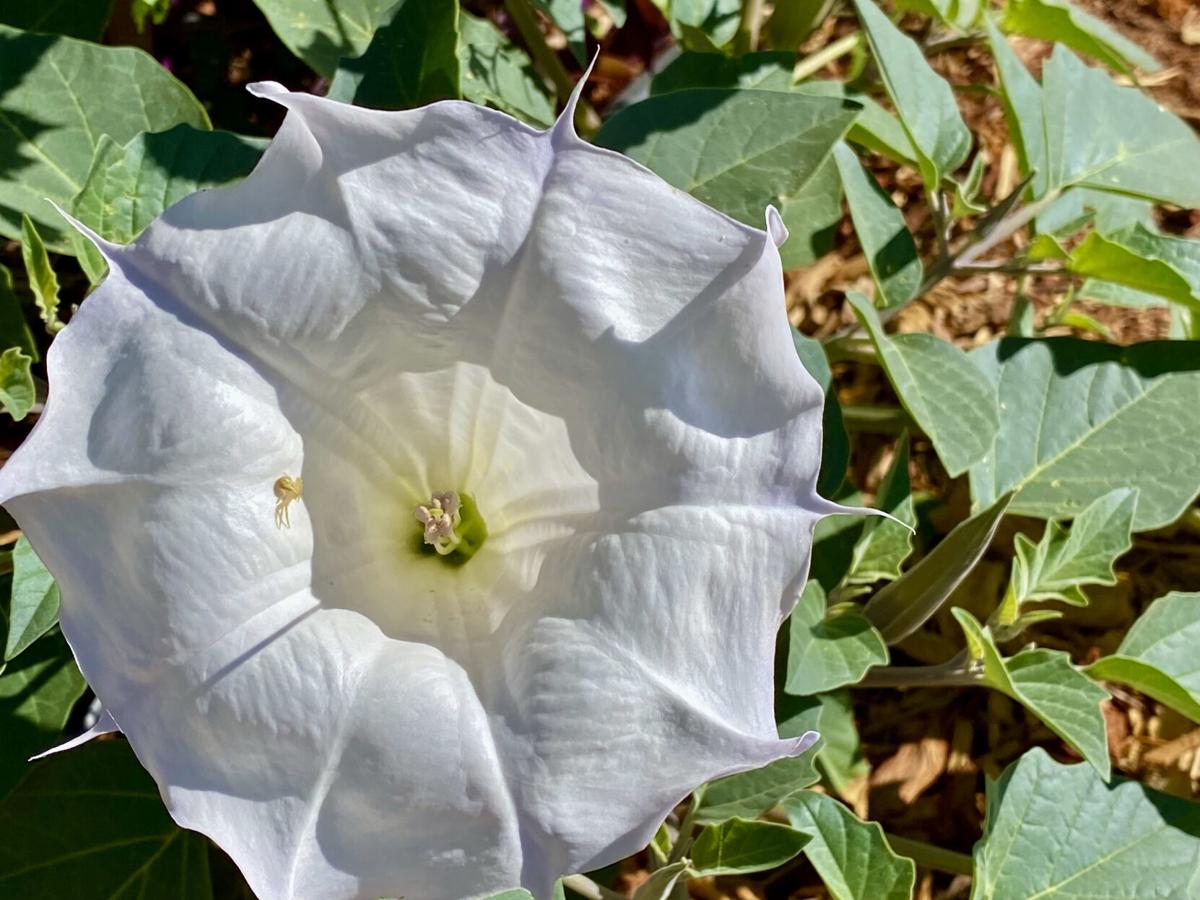I’ve been in love with sacred datura (Datura wrightii) ever since I saw the famous Georgia O’Keeffe painting of it when I was 9 years old. The huge flowers are a luminous silvery white, the foliage is a rich blue-green, and the plant forms a mounding cover over the ground. Even the spiny seed pods are beautiful.
It also produces hallucinogenic compounds like scopolamine which can kill you when ingested. Concentrations of the toxins vary hugely between plants so it’s unfortunate that some people try it recreationally. It is very unlikely to be ingested by accident, as these compounds reportedly have a very bitter taste. Due to its chemical compounds, it was used medicinally by Southwestern tribes like the Zuni for surgical anesthesia and for ceremonial purposes.
Sacred datura is native to the southwestern U.S. and northern Mexico and goes by many names: Jimson weed, moonflower, and thorn apple being a few. Oddly enough, it’s in the same family as potatoes and tomatoes. It likes well-drained soil and a bit of extra water as it normally thrives in washes. It can grow in full sun and also in light shade. The trumpet-shaped flowers are up to 6 inches across, and when in peak bloom can cover the whole mound, creating a spectacular show in your garden.
It is sometimes considered an annual because it dies back in the winter, but the roots can survive underground and re-sprout. It is also easy to grow from seeds, which it produces prolifically. You will need to nick the seed coat before planting. Make sure to wash your hands afterwards, as the toxins are concentrated in the seeds.
The plant is pollinated by large moths, like the sphinx and hawk moths (Sphingidae spp.), which are impressive themselves and are sometimes mistaken for hummingbirds.
Make more plants from the ones you already have. This video shows you how to propagate your plant using cuttings. Video by Dominika Heusinkveld/Arizona Daily Star





